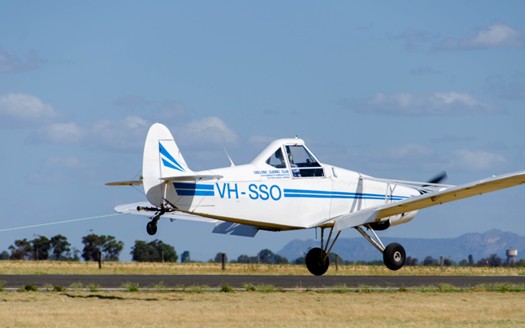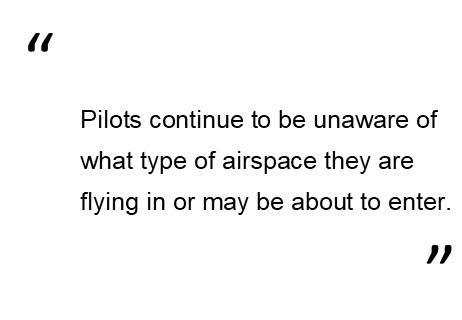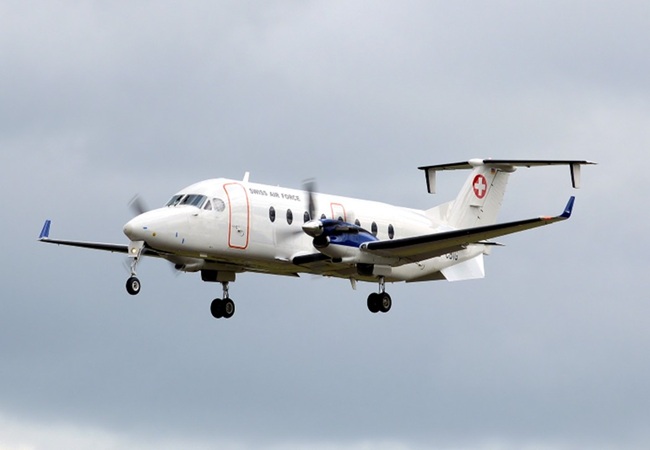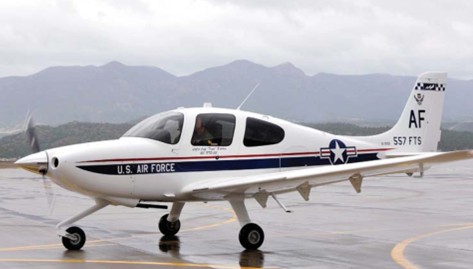The Saturday morning breakfast fights have generally been very good, but the last one was a bit concerning because of a few rain showers in the area. It wasn’t really much of a problem, and besides, we needed the rain! It’s all for fun as it usually is. So, with that in mind, let’s get out there and go flying for any reason at all.
A group of us flew into Casa Grande for a fly-in breakfast the other weekend, and we encountered a frequently occurring problem. That is, there are a few instructors that are using the instrument approach into Casa Grande, and when they make a position report, they give their position only as “Casa.” A VFR pilot, or someone just entering the area, has no knowledge of where that other aircraft at “Casa” really is. Are they at Casa Blanca or Casa Grande. Casa Blanca is about 15 nm north of the Casa Grande Airport. These Instructor’s may think they are being “cool” by only using the term “Casa,” but it doesn’t save any time, and it’s not really “cool.” It only adds ambiguity to the issue. If anything, these pilots may need to go back to ground school and learn correct radio communications. It is possible that another aircraft could be using a waypoint near Casa Blanca to practice their holding pattern before entering the Stanfield Stack. Something to think about.

We are still waiting to hear how the legislation is progressing on the national level that would restrict ADS-B information to be used only for flight safety issues, and we also have the U.S. Air Force proposal to reconfigure the MOAs in Arizona, and redefine how and when they will be used. We also have the Beyond Visual Line Of Sight (BVLOS), Part 108 proposals awaiting resolution.
APA has many tasks laid out for us for the coming year, but our manpower is limited. If you think you can assist us, please contact our president Chris Nugent, and please offer your help.
MISCELLANEOUS ITEMS
FAA
The FAA has been relatively quiet regarding regulations that would impact our flying. However, we have the MOSIAC proposal which is presently under much discussion. This item will have a major impact on the sport pilot community as it will drastically change the type of airplane that can be flown.

We hope you got your comments into the FAA regarding the proposal from the Air Force to modify the Special Use Airspace (MOAs) around Arizona. Your letter in opposition was important because the number of responses will be important.
Be assured, we will always be on the alert for rule changes that may occur that would have an impact on your flying activity and immediately inform you.
AIRSPACE
Apparently, studies are under way to approve the use of a small ADS-B transmitter that can be attached to a parachutist to indicate the presence and location of the group, and this same device can also be utilized on drones to provide an electronic conspicuity (EC). From what we have heard this device will provide approximately a 10 mile radius “bubble” around the device providing an EC. We were also advised that the device does not provide a specific identification, so it is not assigned to a specific item. This small transmitter is relatively inexpensive and is presently available and is being used extensively in Europe.
As you are aware, there is a significant amount of parachute activity continuing throughout the state, and we have been advised that it will be increasing as the weather continues to cool down. Be extra vigilant when flying near airports with known parachute activity, and look for the parachute icon on the chart, which would indicate parachute activity. Be advised that some of this training could be high altitude jumping initiated at Flight Levels, with parachutists descending through airspace far removed from the final landing site. Remember, if you can determine the surface wind direction, the safest place is downwind of the Drop Zone. Always check NOTAMS for parachute activity, and if possible, use Flight Following for your proposed route of flight. Monitor en-route facility frequencies for parachute activity.

SAFETY
It’s a fact that drones are becoming a problem, and we need to be concerned about them. While drones are not supposed to be operated near an airport, based on airport ATIS warnings and NMAC reports, several aircraft have encountered drones during their approach to land at airports that have both bravo and delta airspace. The tower controller has not been aware of the drone’s presence. They are impossible to see in flight, and contacting these drone operators is a problem we all face.
Unfortunately, the number of accidents and incidents was a bit high, but it was fortunate that we didn’t have any fatalities. During this past period there were ten accident/incidents reported, and the information was taken from many sources. For the details of all the accidents/incidents in this past reporting period, see my accident report located elsewhere in this newsletter.
Members, please continue to send accident information to This email address is being protected from spambots. You need JavaScript enabled to view it. with the date, location, aircraft make, if anyone got hurt, and with as much detail as possible. Thank you.
During this past reporting period we only had one Near Midair Collision (NMAC) reported, and this report is appended to the Accident/Incident report.

There were eighteen pilot deviations reported by the FAA SDL FSDO for the period from August 13 through September 11, 2025, and these deviations were committed by pilots with certificates ranging from Student thru ATP/CFI, and there were eight Brashers issued.
Note: A controller will issue a Brasher notification to a pilot when further FAA action will be taken, and the controller is thus giving the airman the opportunity to make note of the occurrence, collect information, and their thoughts for their future interaction with FAA Flight Standards.
Pilots continue to be unaware of what type of airspace they are flying in or may be about to enter. A pilot should always listen carefully to ATC instructions, and follow them, and if they can’t be complied with, immediately tell the controller why you can’t comply. While flying in controlled airspace, a pilot must always comply with ATC instructions and always advise ATC before doing anything that may differ from instructions given. When on the ground, pay attention to airport signs, and runway markings, and know what they mean, and always comply with them.
In summary, the general aviation deviations issued this reporting period are as follows:
- 2 IFR Deviations 2 Brashers
- 5 Class Bravo Airspace Deviations 1 Brasher
- 3 Class Delta Airspace Deviations 2 Brashers
- 5 Runway Incursions 3 Brashers
- 3 Surface incidents No Brashers

For details of all the Pilot Incidents in this past reporting period, see my Pilot Incident report located elsewhere in this newsletter.
CONSTRUCTION
Phoenix Deer Valley Airport (DVT) still has a very long term corporate hangar project underway, and some taxiways are going to be moved further from the runway starting this month to comply with FAA standards. This will provide more space between the RWY hold short lines and the taxiway. All this activity will result in changes to the normal taxi routing. The bottom line is, be sure to get airport NOTAMS, and study them before your arrival.
At Tucson International Airport the construction of the new parallel runway that replaces the old general aviation runway is progressing. There are also numerous other projects underway that could impact your arrival, so always check the latest airport NOTAMS and study them well before arrival.
There are other airports around the state that have construction projects underway or will have projects starting soon. We don’t have specific details on all these projects, but we would urge you to always check for NOTAMS at your destination airport, so you don’t have a surprise upon your arrival.
APA has worked with airports around the state assisting with the updating of their Airport Master Plan by providing the pilot, and aircraft owner’s perspective in the process. The Airport Master Plan Update process usually requires about a year for completion.

THINGS TO DO - PLACES TO FLY FOR BREAKFAST
The fly-in breakfast at Coolidge Municipal Airport (P08) is on the first Saturday of the month and they were re-started in October.
On the second Saturday of the month, consider flying down to Ryan Field (RYN), west of Tucson for breakfast or lunch at Ritchie’s Restaurant. They are open daily from 6 am to 2 pm to serve you.
Grapevine is open full time and the third Saturday weekend camping and cookouts have restarted. Check the newsletter for a possible weekend change. The camp host will prepare the main course for dinner, and campers, please bring a side dish or dessert to share. Grapevine, which lies within a National Forest, is heavily used by the Forest Service for fighting wildfires, and the Military for Special Training so please be sure to check the APA Facebook page for any updates on Grapevine status.
There is a fly-in breakfast on the last Saturday of the month at the Casa Grande Municipal Airport (CGZ). A contract for a cafe has been signed, but until the cafe is operating, the Casa Grande Masonic Lodge will be serving breakfast in the air-conditioned terminal from 7 to 11 am.
When you fly to any of these venues, be sure to look for the Fly Arizona Passport Placard at the restaurant and at the airport terminal. If you haven’t, scan the placard with the FlyAZ App your smart phone to get credit on the passport program for being there.
Check with the APA Getaway Flights program and online calendar for fun weekend places to fly.

